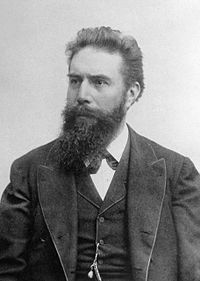Wilhelm Röntgen
Scientist
Wilhelm Conrad Röntgen (/ˈrɛntɡən, -dʒən, ˈrʌnt-/; German: [ˈvɪlhɛlm ˈʁœntɡən]; 27 March 1845 – 10 February 1923) was a German physicist, who, on 8 November 1895, produced and detected electromagnetic radiation in a wavelength range known as X-rays or Röntgen rays, an achievement that earned him the first Nobel Prize in Physics in 1901. In honour of his accomplishments, in 2004 the International Union of Pure and Applied Chemistry (IUPAC) named element 111, roentgenium, a radioactive element with multiple unstable isotopes, after him.
Personal facts
| Alias (AKA) | Conrad |
|---|
| Birth date | March 27, 1845 |
|---|
| Birth name | Wilhelm Conrad Röntgen |
|---|
| Birth place | Remscheid , German Confederation , Prussia , Rhine Province |
|---|
| Nationality | |
|---|
| Date of death | February 10, 1923 |
|---|
| Place of death | Germany , Munich , German Confederation |
|---|
| Education | |
|---|
| Known for | |
|---|
